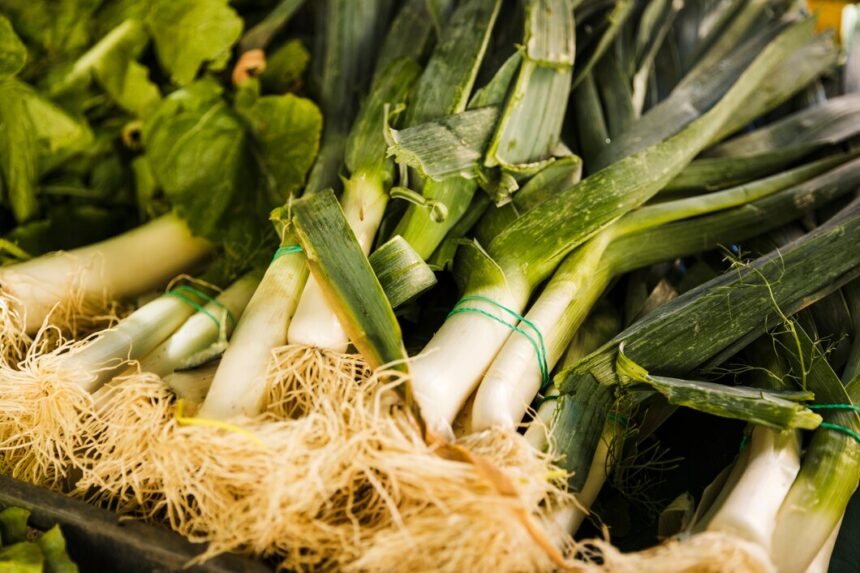Leeks (Allium ampeloprasum var. porrum) are versatile and nutritious vegetables widely grown in South Africa, favored for their mild onion flavor and culinary versatility. Cultivating high-quality leeks with optimal yields requires careful attention to several key factors throughout the growth cycle. Here, we explore effective techniques that South African farmers can employ to enhance the quality and yield of leeks.
1. Selection of Varieties:
Choosing the right variety suited to South Africa’s climate and soil conditions is crucial. Varieties like ‘Dawn Giant’ and ‘Tadorna’ are well-adapted to local conditions and are known for their robust growth and disease resistance.
2. Site Selection and Soil Preparation:
Leeks thrive in well-drained, fertile soil with a pH range of 6.0 to 7.0. Select a site with full sun exposure and good air circulation to minimize disease risks. Prior to planting, prepare the soil by incorporating organic matter such as compost or well-rotted manure to improve soil structure and nutrient content.
3. Planting and Spacing:
Leeks are typically grown from seedlings or transplants. Start seeds indoors in trays and transplant seedlings once they have developed sturdy roots and are about 15-20 cm tall. Plant leeks in rows with a spacing of 15-20 cm between plants and 30-45 cm between rows to allow ample space for bulb development.
4. Watering and Irrigation:
Leeks require consistent moisture throughout their growth period, especially during dry spells. Irrigate regularly to keep the soil evenly moist but not waterlogged, as excessive water can lead to rotting of the roots.
5. Fertilization:
Apply a balanced fertilizer at planting time and side-dress with nitrogen-rich fertilizer once or twice during the growing season to promote leafy growth. Avoid excessive nitrogen as it can delay bulb formation and increase the risk of diseases.
6. Weed Control:
Keep the planting area weed-free to minimize competition for nutrients and reduce the risk of pests and diseases. Mulching around plants can help suppress weeds and maintain soil moisture.
7. Pest and Disease Management:
Monitor regularly for common pests such as aphids, thrips, and leaf miners. Use integrated pest management strategies, including cultural practices and organic pesticides, to control infestations. Diseases such as rust and downy mildew can be prevented by practicing crop rotation and ensuring good air circulation.
8. Harvesting and Post-Harvest Handling:
Leeks are typically harvested when they reach desired size and thickness, usually around 90-120 days after planting. Use a digging fork to gently loosen the soil around the leeks and lift them carefully to avoid damage. Post-harvest, trim roots and outer leaves, and store leeks in a cool, humid environment to prolong shelf life.
9. Seasonal Considerations:
In South Africa, leeks can be grown year-round in regions with mild winters. For cooler areas, consider using row covers or tunnels to extend the growing season and protect plants from frost.
10. Crop Rotation:
Rotate leeks with crops from different plant families to prevent the buildup of soil-borne diseases and pests. A recommended rotation includes legumes or brassicas to maintain soil health and fertility.
By implementing these techniques, South African farmers can enhance both the quality and yield of leeks, ensuring a steady supply of this nutritious vegetable to meet market demands. Continuous monitoring and adaptation of practices based on local conditions will further optimize production and profitability in leek cultivation.
Join 'Farmers Mag' WhatsApp Channel
Get the latest Farming news and tips delivered straight to your WhatsApp
CLICK HERE TO JOIN






